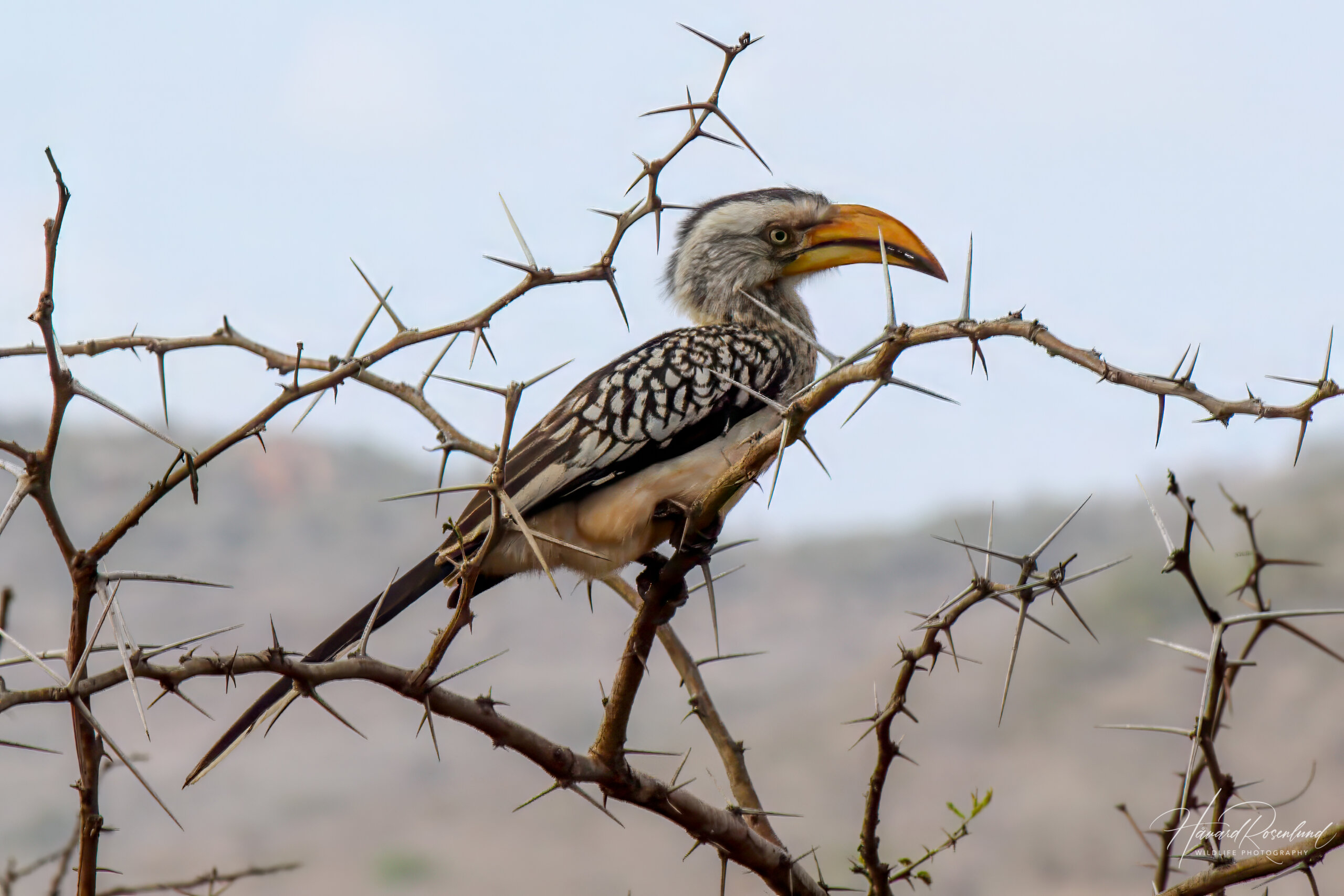Description
The southern yellow-billed hornbill (Tockus leucomelas) is a hornbill native to southern Africa. It can reach a length of 48-60 cm (19-24 in). The beak is long and yellow with a slight casque on the top. The casque is larger on the male. The belly is white, and the back and wings are black with large white spots and stripes. Head is grey except for at the top, where it is white with a black line that goes across. It is somewhat similar in appearance to the eastern yellow-billed hornbill (Tockus flavirostris), but the southern species has pinkish skin around the eyes whereas the eastern species has blackish skin. The white spots on the wings are also generally packed together in a denser fashion on the southern species.
Diet & habitat
Southern yellow-billed hornbills prefer drier habitats and are often found in deciduous woodland, scrubs and open thorny landscapes. They are often found on the ground foraging for insects, spiders, scorpions, and seeds. In the dry season they feed mainly on ants and termites. Small lizards, snakes and rodents are also included in their diet. Activity levels peak in the early morning and late afternoon, although they often stay active throughout the day. They are normally seen alone, in pairs or in smaller flocks.
Nesting
Nests are made by a mating pair in a hollow tree cavity. The cavity will be almost entirely closed with the female inside as she prepares to lay three to four eggs. She will incubate the eggs for about 25 days while the male feeds her through a small opening. After the chicks have hatched the mother will stay in the cavity and feed them through regurgitation for three weeks before she leaves the nest. The chicks will then reseal the entrance and will stay in the nest for 40-45 more days as both parents actively feed them. Upon leaving the nest the chicks will spend a few days perched before taking to the wings. They reach sexual maturity after one year.
Status
The southern yellow-billed hornbill is quite common and numerous within its range and can adapt reasonably well to human influence. They are often quite tame at campsites and rest stops in parks and reserve where they often approach humans for food. There are no immediate threat to the species and it is listed as least concern on the IUCN Red List.







